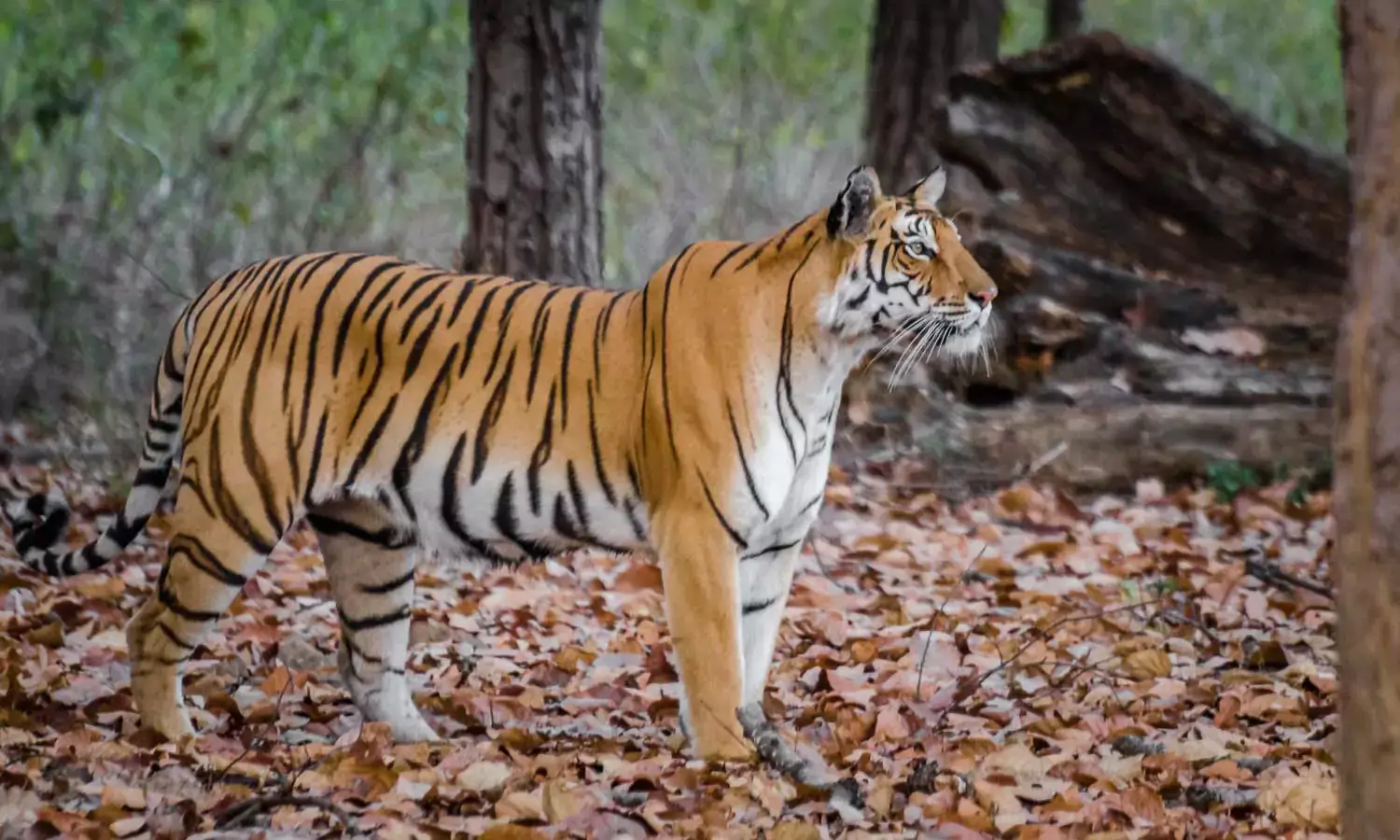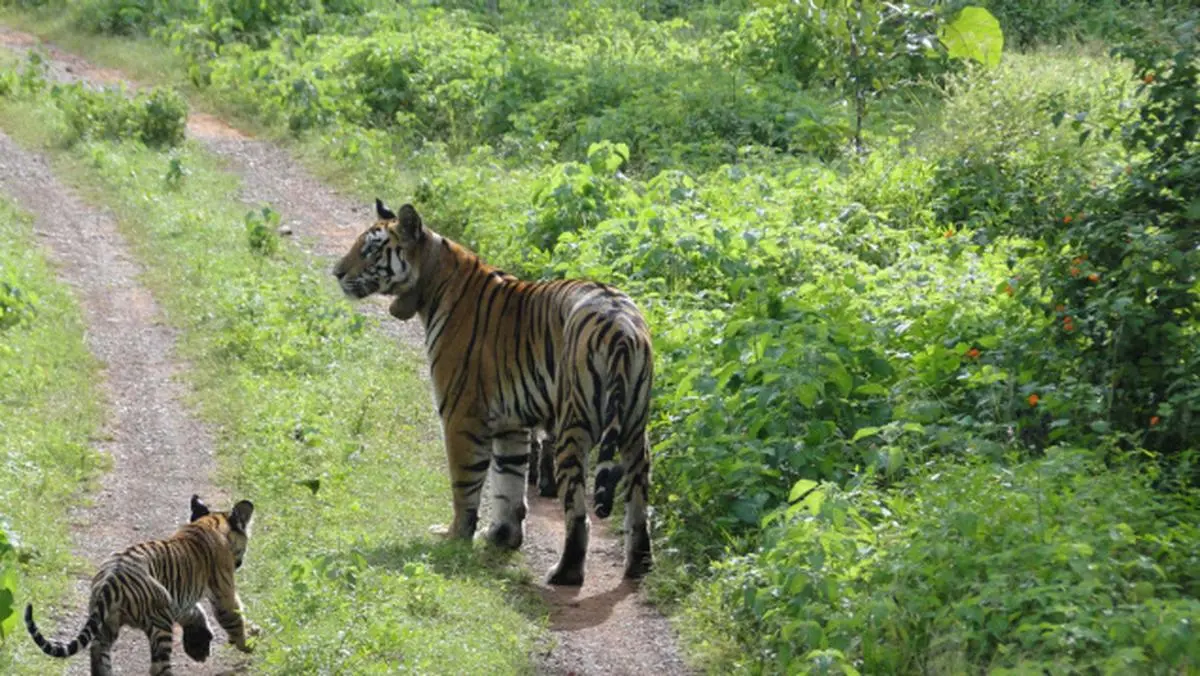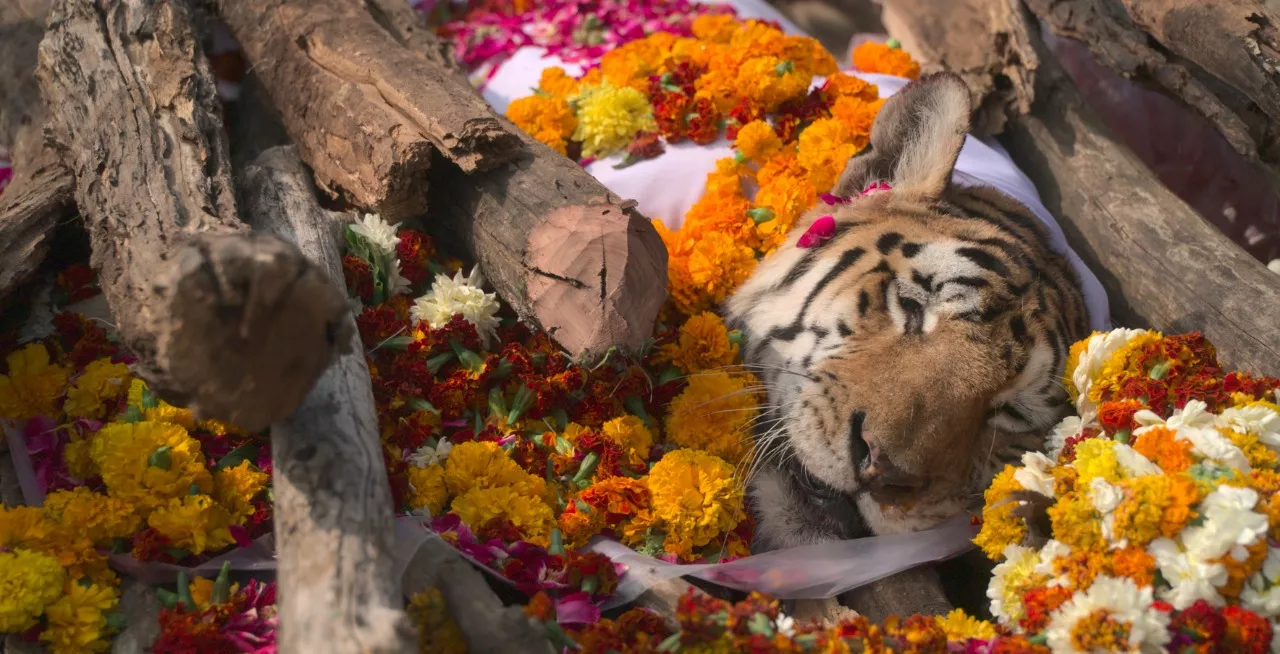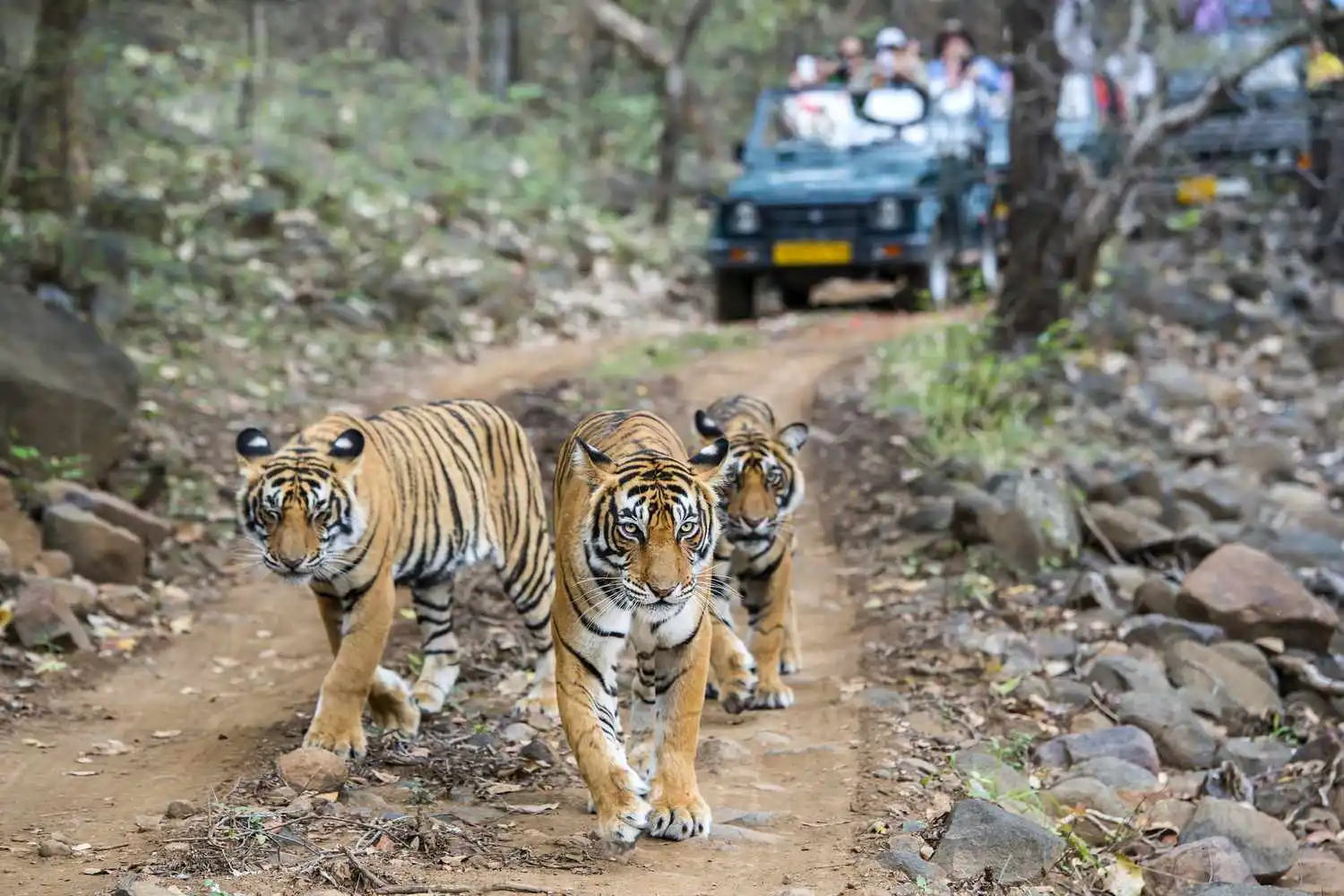The Land of Mowgli, Pench National Park, has lost one of its most iconic residents, Collarwali Tigress, also known as T-15. She passed away on January 15, 2022, at the age of 16 years and 4 months. A true queen of the park, she ruled over her territory for 13 years, becoming a symbol of strength, survival, and conservation efforts. Her passing marks the end of an era in Pench, as no other tiger has brought as much global recognition to the park as Collarwali.
Collarwali’s Rise to Fame

Collarwali, whose name is derived from the radio collar placed on her by the Wildlife Institute of India in 2008, gained international recognition. Her story was captured in the BBC documentary Spy in the Jungle, which followed her journey from a playful cub to a fierce and independent tigress. As the first of her litter to claim territory, she became one of the park’s most frequently spotted tigers, admired by wildlife enthusiasts from all over the world.
Collarwali’s Legacy and Motherhood

Throughout her 16 years, Collarwali gave birth to a total of 29 cubs, a remarkable achievement that earned her a world record for the most cubs produced by a single tigress. Her first litter, born in May 2008, was met with heartbreak as the cubs didn’t survive, but she quickly learned the ways of motherhood. In October 2008, she gave birth to four healthy cubs, and from there on, her reputation as a capable and caring mother grew. She continued to have multiple litters, with her fifth in October 2013, her sixth in 2015, and her record-breaking seventh in 2017.
Collarwali’s Influence on the Tiger Population
Collarwali’s influence on the tiger population of Pench was immense. Not only did she successfully raise her cubs, but her presence also contributed significantly to the conservation efforts of the park. Her territory, often frequented by tourists and wildlife photographers, became one of the most sought-after spots in Pench. Visitors flocked to see the majestic tigress and her cubs, further fueling the park’s reputation as a prime wildlife destination.
The Death of Collarwali

In January 2022, Collarwali succumbed to multiple organ failure, a result of old age. Her death was deeply mourned by wildlife enthusiasts, park rangers, and locals alike. In honor of her legacy, a local tribal leader, Shanta Bai, ensured that Collarwali’s final rites were performed with respect, symbolizing the love and admiration she garnered from all those who encountered her in the wild.
Frequently Asked Questions About Collarwali
– Why is Collarwali called T-15?
In 2008, a radio collar was placed on Collarwali by specialists from the Wildlife Institute of India. This collar marked her for tracking and gave her the name “Collarwali.”
– What made Collarwali so famous?
Collarwali Tigress became famous for her impressive record of 29 cubs in her lifetime. Her role in increasing the tiger population in Pench was pivotal, and she became an iconic figure in wildlife conservation.
– When was Collarwali born?
Collarwali was born in October 2005, making her a significant presence in Pench National Park for over a decade.
– At what age did Collarwali die?
Collarwali passed away on January 15, 2022, at the age of 16 years and 4 months, leaving behind a remarkable legacy of motherhood and conservation efforts.
– Sariska vs. Ranthambore National Park: A Tiger Safari Comparison

Compare the tiger safari experiences at Sariska and Ranthambore, two of Rajasthan’s premier wildlife destinations.
Collarwali’s Enduring Influence
Collarwali’s legacy will continue to inspire wildlife conservation efforts for years to come. Her story has not only increased the global interest in Pench National Park but has also played a crucial role in bringing attention to tiger conservation across India. As her memory lives on, wildlife enthusiasts, photographers, and nature lovers will forever cherish the moments they spent witnessing the regal presence of Collarwali in the wild.

